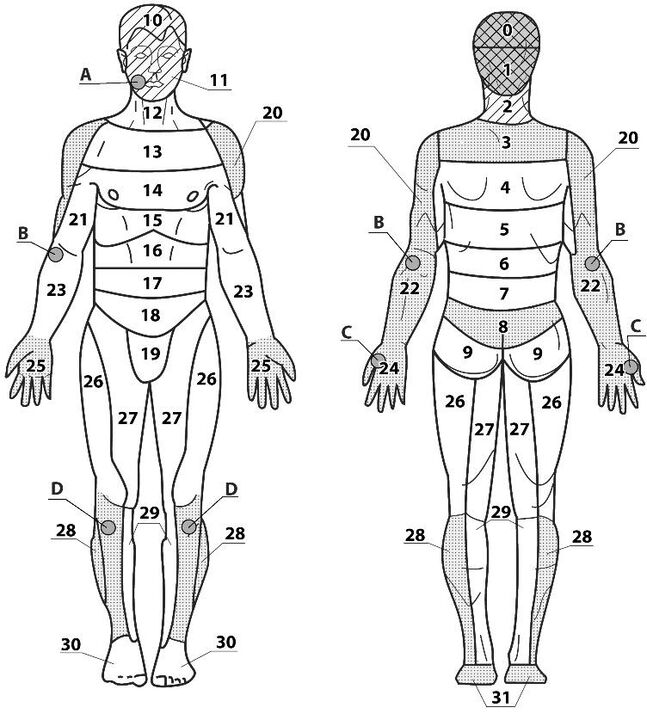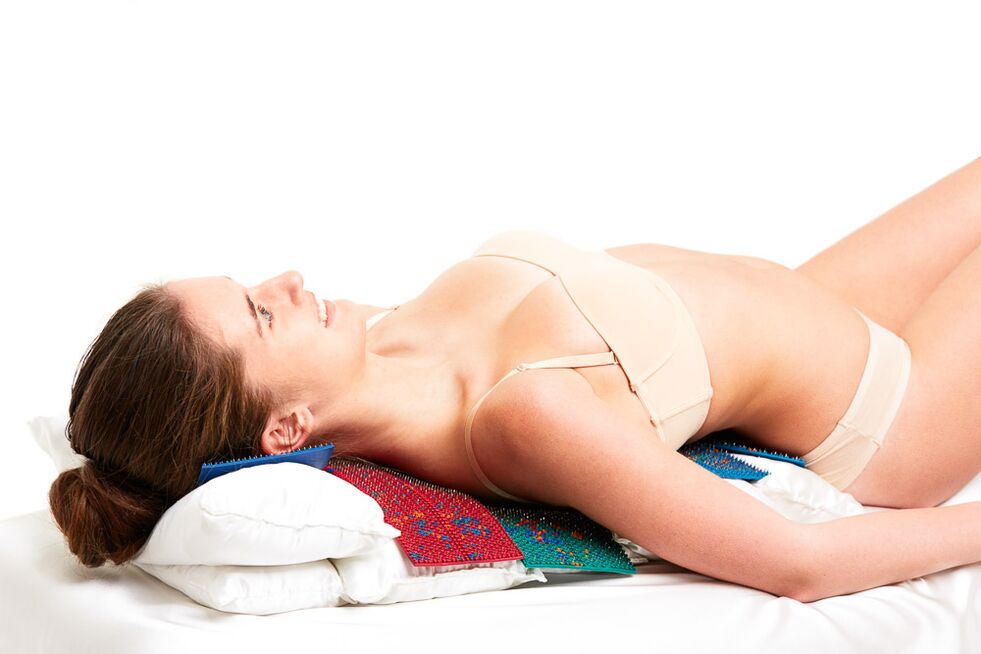Cervical osteochondrosis is a progressive dystrophic-degenerative lesion of the intervertebral discs in the vertebral region 1-7 of the cervical spine.
Cervical osteochondrosis results in deformity, exhaustion, and then damage to the vertebral bodies. This disrupts the normal blood supply and nerve conduction in the neck and the areas that the nerve roots of the cervical spine are nerve-wracking.
Cervical osteochondrosis can be isolated or combined with osteochondrosis of other parts, such as the chest, lumbar and sacrum.
Cause
A number of factors that predispose to osteochondrosis are distinguished. These include:
- sedentary and sedentary lifestyle;
- types of sedentary work that cause a static load on the neck;
- overweight, insufficient physical development;
- connective tissue dysplastic processes;
- circulatory disorders in the neck;
- neck injuries;
- scoliosis, poor posture, uncomfortable pillows and mattresses;
- hereditary predisposition, metabolic disorders.
Symptoms of osteochondrosis of the neck. Complications
The cervical spine is most susceptible to the development of osteochondrosis. The vertebrae in it are the smallest compared to the rest of the spine, the muscular frame is not very pronounced, the weight of the head and the vertical posture affect the vertebrae. In the cervical spine, the vertebrae are close together. Even minimal change can lead to compression and even displacement of nerves and blood vessels.
The most common symptom that patients complain of is cervical spine pain. Depending on the area affected, the pain can be localized: in the clavicle and shoulder; all over the cervical spine; on the front surface of the chest.
The first signs of osteochondrosis of the neck may be insignificant: headache, headache in the occipital region, evening neck pain, numbness or tingling in the shoulders and arms.
Leading symptoms
Vegetative-dystonic.
Severe "shooting" pain in the neck, just below the nape of the neck. The pain occurs after a long stay in one position, after sleep, after constant tension in the neck muscles.
Difficulty moving the hand to the side, stiffness and numbness of the fingers. Due to the compression of the vertebral arteries, neurological manifestations are observed: headache, nausea, dizziness, unjustified spikes in blood pressure.
Spine symptom.
The pains are located behind the sternum on the left side.
This type of pain should be distinguished from angina pain (nitroglycerin provides relief in angina pectoris, not osteochondrosis).
As the structure of the intervertebral discs is gradually compressed, the nerve roots are damaged and the arteries and veins passing through the region of the vertebral bodies are narrowed or damaged.
This leads to the development of special syndromes - radical and ischemic:
- defeat of the roots of the first cervical vertebrae (C1): abnormalities in the cervical vertebrae;
- The C2 lesion causes pain in the crown and cervical region;
- the C3 lesion causes neck pain on the side of the injury, decreased sensitivity of the tongue and hypoglossal muscles, possible speech impairment;
- damage to C4 and C5 causes pain in the shoulder and collarbone, reduces muscle tone in the head and neck, causes hiccups, breathing problems and heart pain;
- Most commonly, C6 lesions occur, causing pain from the neck to the scapula, forearm, and thumb, and may cause skin sensitivity;
- C7 lesion - similar symptoms with pain in the neck, back of the shoulder all the way to the back of the hands, decreased strength of the arms and reflexes.
Circulatory disorders due to compression of the blood vessels in the cervical vertebrae can cause headaches, migraines, dizziness, blurred vision, flickering in front of the eyes, and impaired vegetative functions.
Manifestations of cardiac syndrome may include depressive heart pain, shortness of breath and palpitations, arrhythmias.
Complications.
Protrusion of the intervertebral discs with the formation of a hernia (protrusion).
Rupture of the intervertebral disc by pinching of nerves and blood vessels, possible compression of the spinal cord, which can be fatal.
Root lesions (radiculopathy), the formation of spines on the vertebral bodies (osteophytes) with paresis and paralysis.
If the above complaints occur, an orthopedic or neurologist should be consulted and the necessary research performed.
Nutrition
Proper nutrition significantly alleviates the condition of osteochondrosis. The diet should be complete. If a person is of normal weight, Pevzner says he can use a 15-therapeutic diet as a base. It contains all the necessary minerals and increased amounts of fat and water-soluble vitamins. Foods rich in natural chondroprotectors should be consumed. Chondroitin is found in red fish, animal tendons and cartilage, and chicken meat.
Be sure to take clean water in a volume of 1, 5-2 liters. Fluid is needed to prevent the intervertebral discs from drying out.
Traditional and non-traditional treatments
Treatment
Today, there are both traditional and non-traditional methods for treating osteochondrosis of the cervical spine.
Medications: symptomatic therapy with analgesics to relieve pain; taking non-steroidal anti-inflammatory drugs to relieve inflammation and tissue edema; antispasmodics; blood circulation drugs; chondroprotectors to restore the structure of intervertebral discs.
The picture shows vitamin B group therapy, external therapeutic agents - gels and ointments, creams containing anti-inflammatory, warming and analgesic ingredients.
It is recommended to wear a special collar (Shants collar) during the exacerbation period.
Complications of cervical osteochondrosis with intervertebral hernias that impair sensitivity and blood circulation can be treated immediately.
The duration of treatment depends on the condition being ignored, as osteochondrosis is a progressive chronic disease. Treatment can be long and preventive courses can be taken over a lifetime.
Physiotherapy treatments.
These include exercise therapy, magnetotherapy, balneotherapy, laser therapy, acupuncture, Lyapko’s application therapy, and massage.
Physiotherapy
Exercises should be performed several times a day to treat cervical osteochondrosis. These include self-stretching, self-massage, a range of special exercises. Avoid neck injuries and heavy lifting.
A long session should be combined with rest and warm-up.
The basis of cervical spine health is a strong and healthy back, physical activity, a comfortable bed with anatomical pillows and a mattress, proper posture and proper nutrition.
Lyapko application therapy

Areas of application:
- base 2, 3;
- additional 1, 4, 12, 13;
- assistant 20, 22, 28, 31.
General recommendations
When using the applicator, the zones of main, auxiliary, and maximal pain are used, but for very severe pain, applicators should be applied above and below the painful zone, or points and zones on opposite sides should be used. Exposure time 10-30 minutes.

When cervical osteochondrosis is combined with osteochondrosis of other parts, such as the chest, lumbar and sacrum, application therapy can be applied simultaneously or alternately to all parts of the spine. The larger the exposure area, the better the effect.
















































